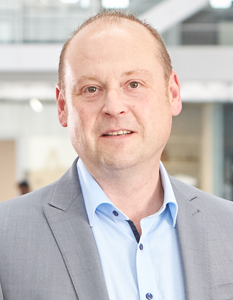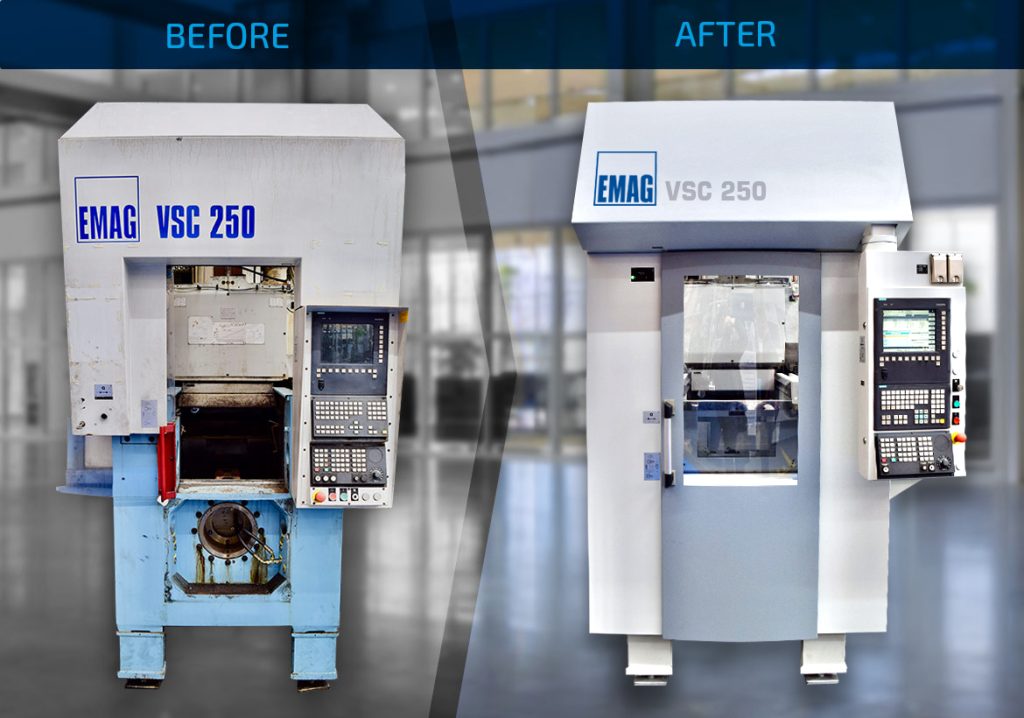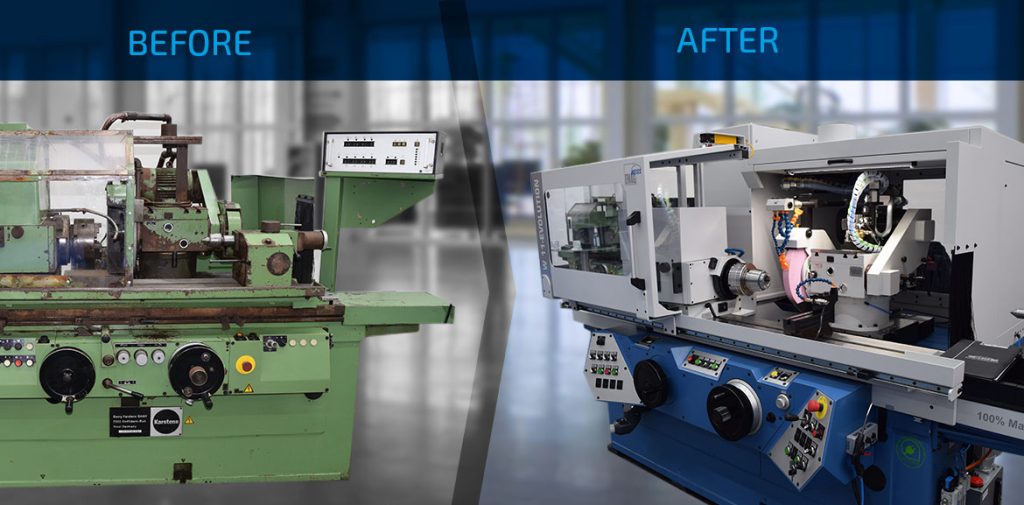Imagine your old machine tool suddenly being able to do more than ever before – and with less energy consumption. What sounds like a dream has become reality with EMAG’s retrofit solutions. In this interview, Markus Heidel, Head of the Retrofit Business Unit at EMAG, explains how used machines can be turned into real speedsters and why this concept will shape the future of mechanical engineering.

Markus Heidel, Head of Business Unit Retrofit at EMAG
Mr. Heidel, EMAG offers retrofit solutions. Can you explain to us what exactly this term means?
Of course. Retrofit literally means “to upgrade”. At EMAG, we understand this to mean a comprehensive process in which we modernize used machines and bring them up to the latest state of the art. The aim is to give our customers the opportunity to modernize their production with low capital investments and at the same time act sustainably.
That sounds interesting. What makes EMAG retrofitting machines particularly suitable for such retrofits?
A decisive factor is our machine base made of polymer concrete, which we call “mineralite”. This material has exceptional properties: it has 8 times better vibration behavior than cast iron and gets even better over the years – it “settles”, so to speak. This forms an ideal and durable basis for our conversions. The robust base body can be used for a long time after a machine conversion without any issues.
Can you give us a specific example of a retrofit project?
With pleasure. A current example is the conversion of an approximately ten-year-old VSC 250 turning machine into a turning and grinding center. We adapted the headstock for combination machining and replaced all wear parts such as linear guides, feed drives, hydraulic elements and pneumatic hoses. The result is a machine that can be used more flexibly and significantly reduces machining times.

This before and after picture shows an old, worn lathe on the left and the same machine on the right after the retrofit as new with modern controls.
That sounds like a considerable improvement. What advantages does such a retrofit offer compared to a completely new purchase?
The main advantage is definitely the cost. A converted machine is around 15 to 20 percent cheaper than a comparable new purchase. At the same time, it offers the performance of a new machine. It is also often possible to integrate additional technologies, which increases flexibility. In some cases, we can even reduce energy consumption compared to the old machine.
How do you proceed with a typical retrofit project?
Our approach is very structured. We start with a thorough inventory and create a detailed concept. This is followed by a complete offer for the overhaul. Depending on the customer’s location, we carry out the work on site or in our factory. A particularly important step is the thorough overhaul of the spindle assembly. It is completely dismantled, cleaned, all wear elements are replaced, it is re-measured and tested on the test bench.
In times of IoT and climate change, to what extent do you take trends such as digitalization and sustainability into account in your retrofits?
These are indeed very important aspects for us. As far as digitalization is concerned, we offer the integration of our IoT technology EDNA, for example. This can be integrated into more modern existing machines and then provides regular information on the condition of the axes and determines the OEE, i.e. the overall equipment effectiveness.
When it comes to sustainability, we take a very targeted approach: We analyze the existing production solution, identify unnecessary “energy guzzlers” and implement more economical processes. In concrete terms, this means, for example, that the machine’s media and drives are automatically switched off after the retrofit adjustments if no processing program is running. This saves a considerable amount of electricity. We also make sure that new machine components fit the machining requirements exactly and are not oversized, which also reduces energy consumption.
That sounds like a comprehensive approach. What distinguishes the EMAG retrofit from offers from other providers?
The decisive difference lies in our expertise as an original manufacturer. We know our machines inside out – the design, all components and processes in every detail. This enables us to work faster and with more precise technology than anyone else. As a result, our customers receive solutions of the highest quality that are as efficient as new machines. This claim prevails in the market.

Conversion of a Karstens cylindrical grinding machine from the 1980s into a modernized version, which is now known as the EMAG Weiss W 11. The originally manually operated machine was equipped with modern technologies such as servo-electric Z and X axes and a CNC control system with a robust, industrial-grade control panel.
One last question: How do you see the future of retrofitting in the manufacturing industry?
I am convinced that retrofitting will play an increasingly important role. In view of rising raw material prices and the growing awareness of sustainability, retrofitting offers an excellent opportunity to conserve resources and produce economically at the same time. It also enables companies to react flexibly to changing market requirements without having to constantly invest in completely new machines.